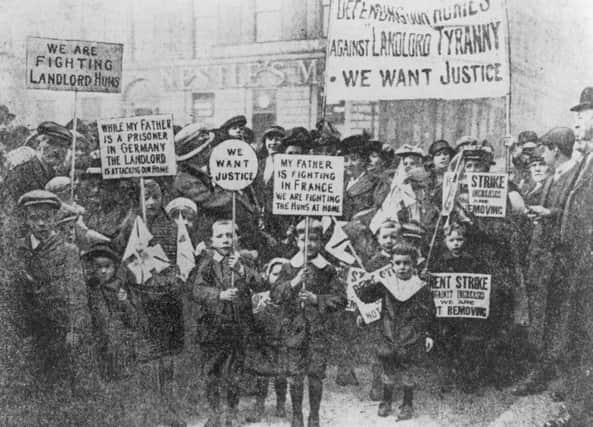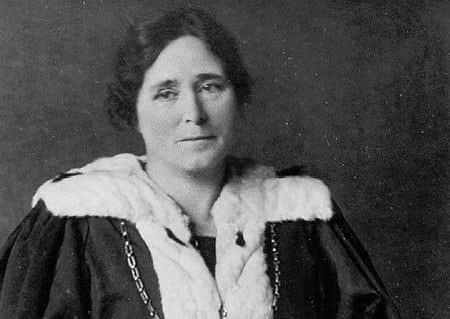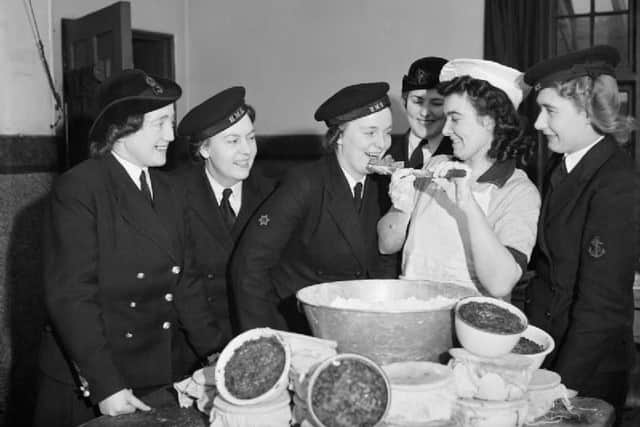Opportunities for Scottish women: 1915 | 1965 | 2015


1915
Prior to the First World War, women in Scotland were largely confined to the domestic sphere. Much of the female population were resticted to roles as mothers and wives with limited employment opportunites availiable to them.
At the outbreak of war in 1914, the male population rushed off to fight for the British Army in the muddy fields of France. With the men fighting and dying overseas (147,000 Scots died during the conflict) women were given the opportunity to become part of the war effort.


Advertisement
Hide AdAdvertisement
Hide AdMany joined the Women’s Land Army or Voluntary Aid Detachments where they played a vital role in munitions factories or as engineers. Some women also served as police officers, train conductors and bus drivers, offering valuable services to society and changing perceptions of the role of women for good.
Organised by the Scottish Federation of the National Union of Women’s Suffrage, the Scottish Women’s Hospital brought a significant amount of attention to the women’s suffrage movement. Their hard work and dedication to helping injured soldiers demonstrated the strong will and work ethic of women across the country.
By November 1915, 20,000 households throughout Glasgow were on rent strike in response to the increases in rent prices they faced while their husbands were at war. More empowered and outspoken than ever before, thousands of women marched in protest through Glasgow.
At the forefront of the campaign was Govan based Mary Barbour, who was a charismatic and skilled organiser and fiercely opposed to the increases that had been imposed - in some cases up 23 per cent on pre-war levels. The march was a culmination of many months of protest for Barbour and as a result, the Rent Restriction Act was implemented - a major success in the continuing fight for enfranchisement.


Despite significant gains, it was to be another three years and an uphill struggle until women were given the right to vote. Under the Representation of the People Act 1918, men over the age of 21 and women over 30 were enfranchised, leaving a significant proportion of the female population unable to participate in democracy.
1965
After fifty years and another destructive global war, the position of women in Scotland had changed dramatically. Not only had all women been given equal votings rights with men, the Sex Discrimination Removal Act, the Law of Property Act and introduction of the National Health Service had significantly improved the lives of women across the country. Women began to infiltrate positions usually occupied by men.
In the years before 1965, only one in thirty girls in Scotland entered full-time university level courses. The introduction of O’ Grade helped remedy this, meaning that females from working class backgrounds were increasingly going on to university, improving their career prospects.


The work of the women’s movement was far from over. With improvements still to be made in securing equal pay for men and women, legalising abortion and introducing contraception, the battle continued for the next fifty years and involved men and women of all ages and ethnicities fighting for the same cause.
2015
Advertisement
Hide AdAdvertisement
Hide AdSubsequent to the opening of the Scottish Government in 1999, opportunities for women, especially in government have never been greater.
This year saw the appointment of the first female first minister of Scotland, Nicola Sturgeon who has taken steps to further bridge the gap between men and women by appointing a 50/50 gender balanced government. Speaking on her decision, she said her cabinet was a “clear demonstration that this government will work hard in all areas to promote women, to create gender equality and it sends out a strong message that the business of redressing the gender balance in public life starts right here in government.”
The gender imbalance which Sturgeon refers to is evident in figures released by the Scottish government. Scotland’s female employment rate is 72.4 per cent according to figures. However, the gender pay gap as of March this year is 17.5 per cent. As detailed by the Telegraph, women work from the 4th of November to the end of the year for free, due to gender pay inequality. Although there are opportunities out there, women are often less likely to secure them. For example, 17 out of 66 board positions are held by women – 25 per cent of the total.
The Smith Commission Agreement, published in November 2014, recommends that powers, including, but not limited to, the introduction of gender quotas in respect of public bodies in Scotland, be devolved to the Scottish Parliament. This recommendation has been echoed by Labour leader Kezia Dugdale who stated that the “fight for women’s equality is not over”.